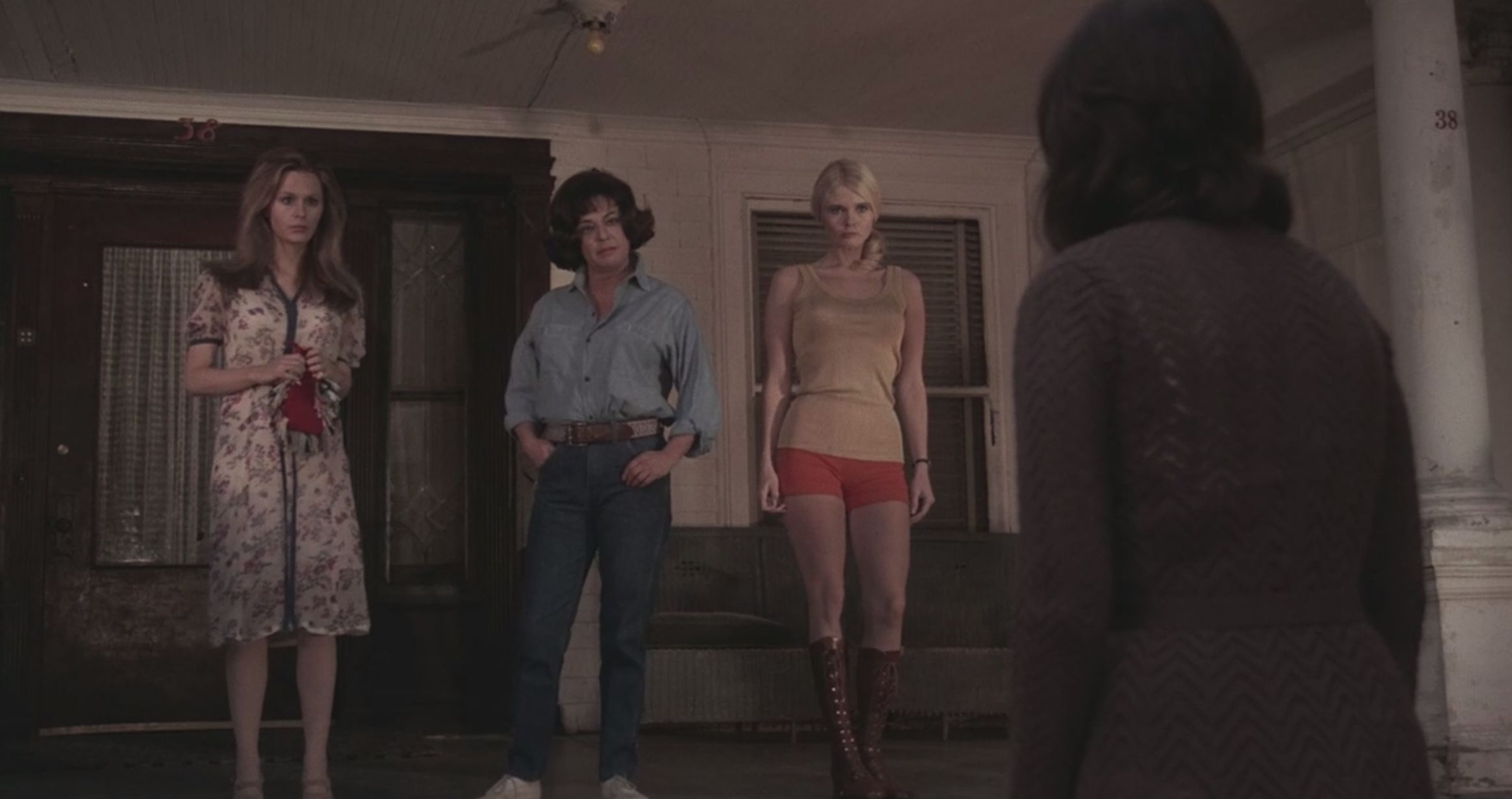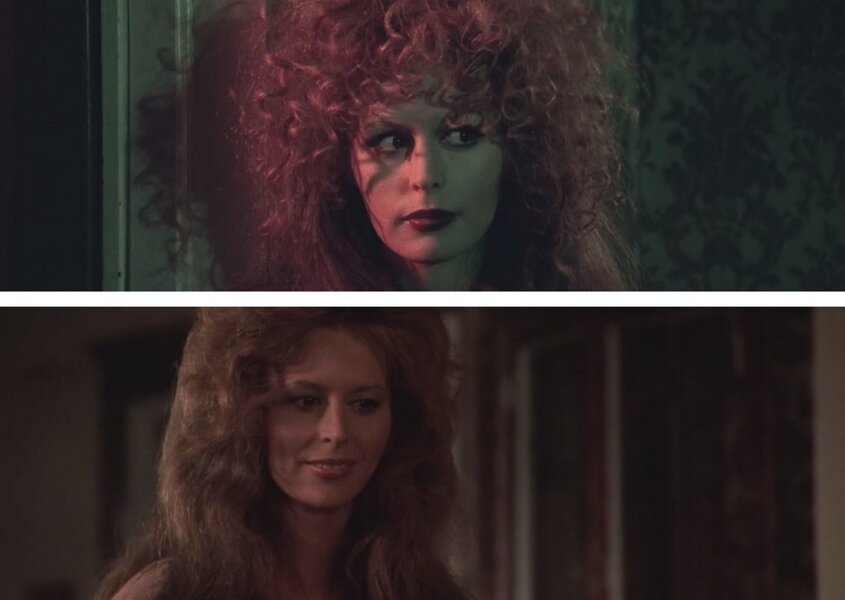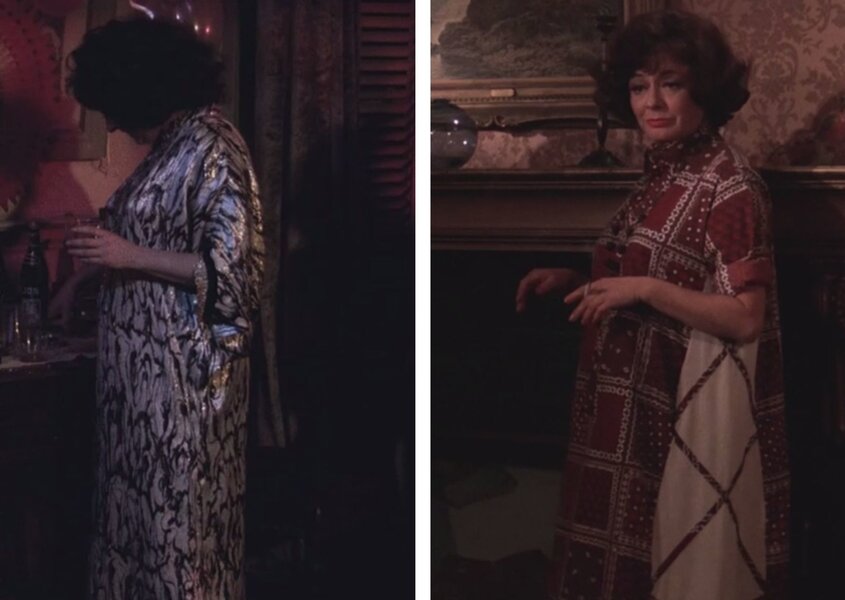Create a free profile to get unlimited access to exclusive videos, sweepstakes, and more!
Deep Cuts: The Baby

The world of horror is vast. With so many films across the spectrum of budget, studio involvement, quality, availability, and, above all else, pure scare-the-living-shit-out-of-you-ness, it helps to have trained professionals parse through some of the older and/or lesser-known offerings. That's where Team FANGRRLS comes in with Deep Cuts, our series dedicated to bringing the hidden gems of horror out of the vault and into your nightmares. This week we're looking at The Baby, a horror movie that literally must be seen to be believed.
A bright and shining example of blissful f***ery amidst the ‘70s horror landscape, Ted Post’s The Baby recently made its way to Shudder, giving a whole wave of people the opportunity to experience one of the most WTF movies in film history for the first time.
The Baby’s particular brand of offbeat horror is so effective in how it sneaks up on the viewer that it’s really best to know nothing—and I mean absolutely nothing—before watching it. But that kind of belies the point of this article. In vague terms, let me say this:
Imagine the most perverted PG movie you’ve ever seen.
Imagine a cinematic cross-contamination between a made-for-TV family drama and John Waters.
Imagine … The Baby.
The Baby’s premise is, if not innocuous, at least not hardcore “horror” from the outset. Social worker Ann (Anjanette Comer) takes on a new case, that of the Wadsworth family, consisting of mother Mrs. Wadsworth (Ruth Roman of Strangers on a Train, turning in a performance that puts her in league with the hagspolitation greats), adult sisters Alba (Suzanne Zenor) and Germaine (Marianna Hill) … and Baby (David Manzy), an adult man with the mental and physical faculties of an infant. He sleeps in a crib, plays in a playpen, and wears baby clothes. His mother never even gave him a name. She is, at the same time, fiercely protective of her son, reveling in the fact that "Baby will never have to [grow up and] face all that hurt and ugliness out there. Here his life is perfect." Ann, of course, is concerned for Baby and begins to believe that there is, within him, a “normal” adult man whose growth has been intentionally and cruelly hampered by an overbearing mother.
It’s the sort of overwrought plot that you might expect to see in a Lifetime movie, rather than on the horror rack at the video store ('70s movie, remember). Most of the movie takes place in the daytime, and the cinematography is straightforward and without flair. The score is, for lack of a better word, muzak. One almost expects things to take a legal drama turn—a NOT WITHOUT MY BABY confrontation between a heroic social worker and the uncaring system unwilling to help an innocent man who has, argues Ann, “been imprisoned by a kind of sick love.”
The Baby ain’t that.
[If you think you'll see The Baby, I recommend you stop now and do so, as the more you read about it, the less potent will be your eventually brainmelt. I’m spoiling everything, up until the final twist, which literally made me scream at my TV in mingled joy and horror.]
Something isn’t right with the Wadsworth family, and it’s not just the “WTF is this adult baby doing here” situation. Everything’s just a bit off, from Mrs. Wadsworth’s brassy, borderline mob-moll demeanor—utterly out of place among the film’s suburban setting—to the ways her daughters dress: pettish Alba, blonde and mini-skirted, straight out of a ‘60s exploitation film, and older Germaine, whose hair is just a LOT:
Baby, himself, is an enigma. Post made the genius decision to have all his “dialogue”—mostly the coos, cries, and squeals of a typical infant—be dubbed by an actual baby, which is way creepier than it sounds.
Post lulls you in by making you think you know where this movie is going, only to throw you curveballs before dialing it back again to staid family-drama territory, allowing the full impact of how surreal this world has gotten to sneak up on you. For example: Ann, against Mrs. Wadsworth’s wishes, tries to teach Baby how to stand. The very next scene, Alba, angry at Baby’s “insubordination,” shocks him with a cattle prod, screaming at her younger (older?) brother that "Baby doesn't walk! And Baby doesn't talk! And Baby doesn't stand!" The cattle prod is never explained, though we know the family has a yen for corporal punishment from the scene where Baby’s babysitter gets caught suckling him and subsequently gets beaten with a rope.
There’s just something incredibly seedy about this PG movie. There’s no nudity, no sex, and minimal blood. But we see Germaine crawl into Baby’s room in a negligee—strip off the negligee—and then … the camera goes to black. What went on just there? Mrs. Wadsworth’s three children are by three different husbands, all of whom left her. Did the trauma, as Ann hypothesizes, cause Mrs. Wadsworth to hate men, prompting a lifetime of psychological warfare against her only son? Did something happen to those husbands? Does Mrs. Wadsworth keep Baby in his state for the welfare checks that are her only source of income … or is she really what she’s convinced the country she is: a loving single mother trying to do her best by her special-needs son? Why is she so resistant to having doctors look at Baby, to the point where she drugs Ann, ties her up, and dumps her in a basement? This happens at Baby’s birthday party, which is basically a ‘60s swinger orgy—again, why?—where Baby crawls around unnoticed while adults drink, play darts, and—in Alba’s case—engage in a little bit of light sexual pyromania. The social worker before Ann thought something was up with Baby, and she mysteriously disappeared. Why does Mrs. Wadsworth wear only two delicious ‘70s caftans?
What is going on?
[SPOILER ALERT: TWIST A-COMIN’]
The answer is that there is no answer, because we were asking the wrong questions. Is Baby curable? Is there some sort of incest thing going on here? What happened to the woman Ann replaced? And, again, I can’t stress this enough—what is with the cattle prod?
It doesn’t matter, because The Baby isn't a movie about a crazy, effed-up family keeping an adult baby prisoner.
It’s a movie about a crazy, effed-up social worker trying to steal an adult baby.
“Surprise! The protagonist was the bad guy all along!” can be hard to pull off, but here it works, because Ann is just so damned innocuous. And because the movie never really lied to us about her intentions—wanting to get Baby away from the Wadsworths—only for her reasons for them.
The seeds, however, are there early on. Ann is a bit too interested in Baby, to the point that she’s neglecting her other clients. She “made a special effort to get this assignment.” Her personal life is unsatisfying—she has no kids, which she regrets, and she used to be happily married to a man who had some sort of accident and is no longer in the picture. Red flags, but far from the sort of red flag you’d see hoisted atop a cattle prod. She has long, brunette waves and wears sensible shoes. Her eyebrows are high on her forehead and plucked thin, giving her the look of being perpetually startled. She’s PTA mom incarnate. Even when she kidnaps Baby and takes him back to her house after the party, you’re still sort of on her side; she did what she had to do to rescue a person in need from a yee-ikes of a family that clearly wasn’t going to let anyone else into their tight-knit family circuit.
Then, in the third act, things switch gears: Mrs. Wadsworth, Alba, and Germaine sneak into Ann’s house to find Baby. Their fear and pain at losing a vulnerable member of their family are real. And then Ann and her mother-in-law straight-up murder the women. Slashes Germaine's throat. Stabs Alba in the back with a kitchen knife. Ann goes at Mrs. Wadsworth with an ax, which Mrs. Wadsworth promptly takes off her and chases her around with—Ann, scared and cowering, is still, some corner of our mind tells us, the victim. The murders of Germaine and Alba were offscreen. We didn’t see or hear anything; maybe it was self-defense?
Then Ann and her mother-in-law corner Mrs. Wadsworth, forcing her to jump off the stairs, breaking both her legs. Ann buries her alive next to the corpses of her daughters in what will be her new pool. Earlier in the film, we saw Ann telling her mother-in-law that it wasn’t ready to be finished quite yet; clearly she’s been planning this massacre.
Mrs. Wadsworth’s anguished cries as she’s dragged to her slow, excruciating death echo the cries of the audience: "What have you done to my baby? Why do you want my baby? Why do you want him? Now what’s going to happen to my baby? What’s going to happen to him? You won’t have him! Tell me! I have to know!"
[NO, SERIOUSLY, THIS IS THE BIG ONE]
Remember Ann’s husband? That “accident”? You’d be forgiven for forgetting. Well, her husband’s an adult baby, too. ("Wifey loves her big, big husband!) And an adult baby needs a playmate. The movie ends with Ann frolicking in their newly built pool—mere feet above Baby’s dead family—with “my two big men!”
There’s not another movie like The Baby, not from Ted Post or anyone else. Post is a workmanlike director who spent 50 years directing dozens of film and TV projects—most notably, sequels to Dirty Harry and The Planet of the Apes—that didn't approach the level of stealth depravity to be found here. If you're going to get all your weird out in one movie, The Baby is the way to go.





























